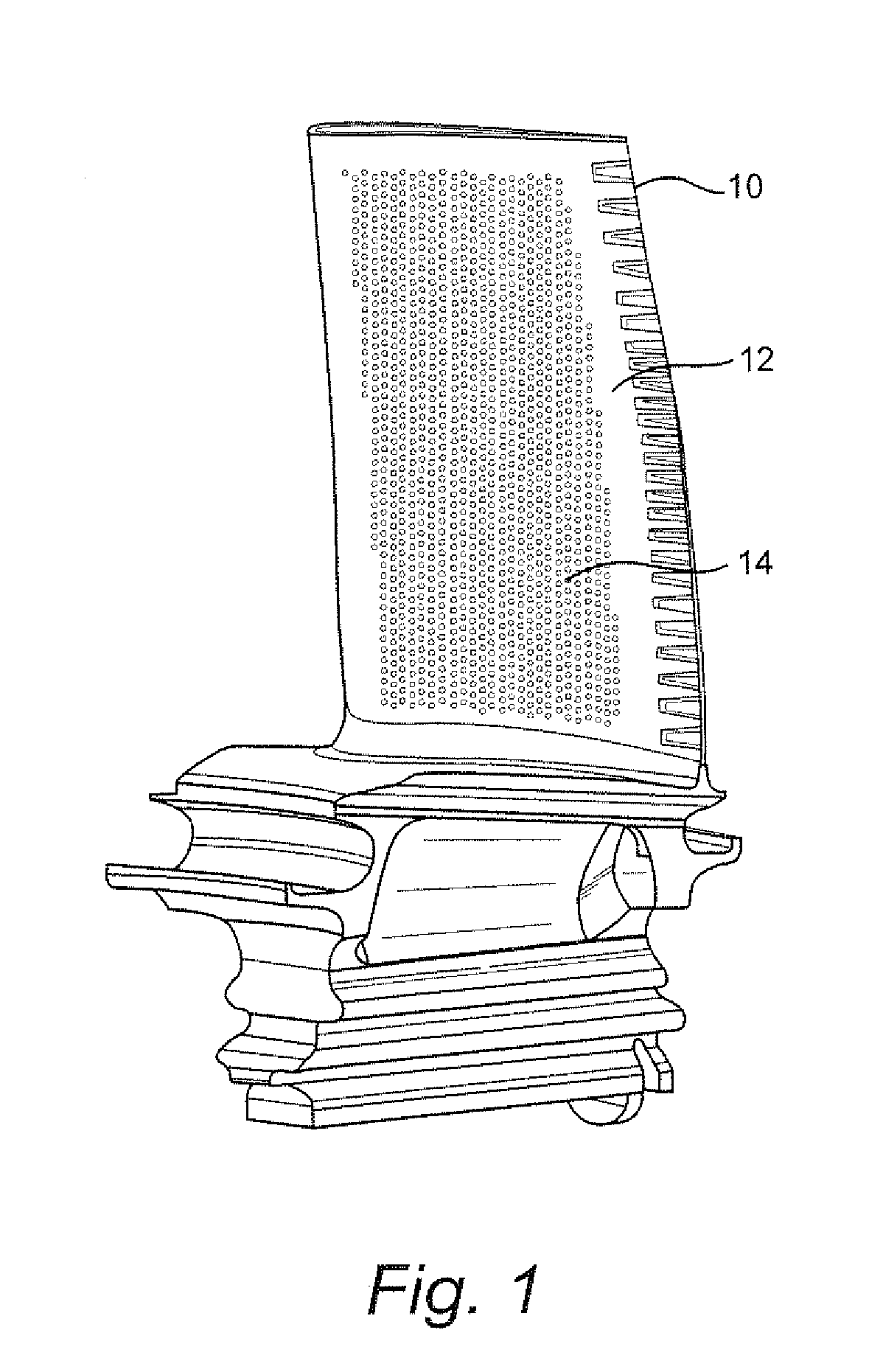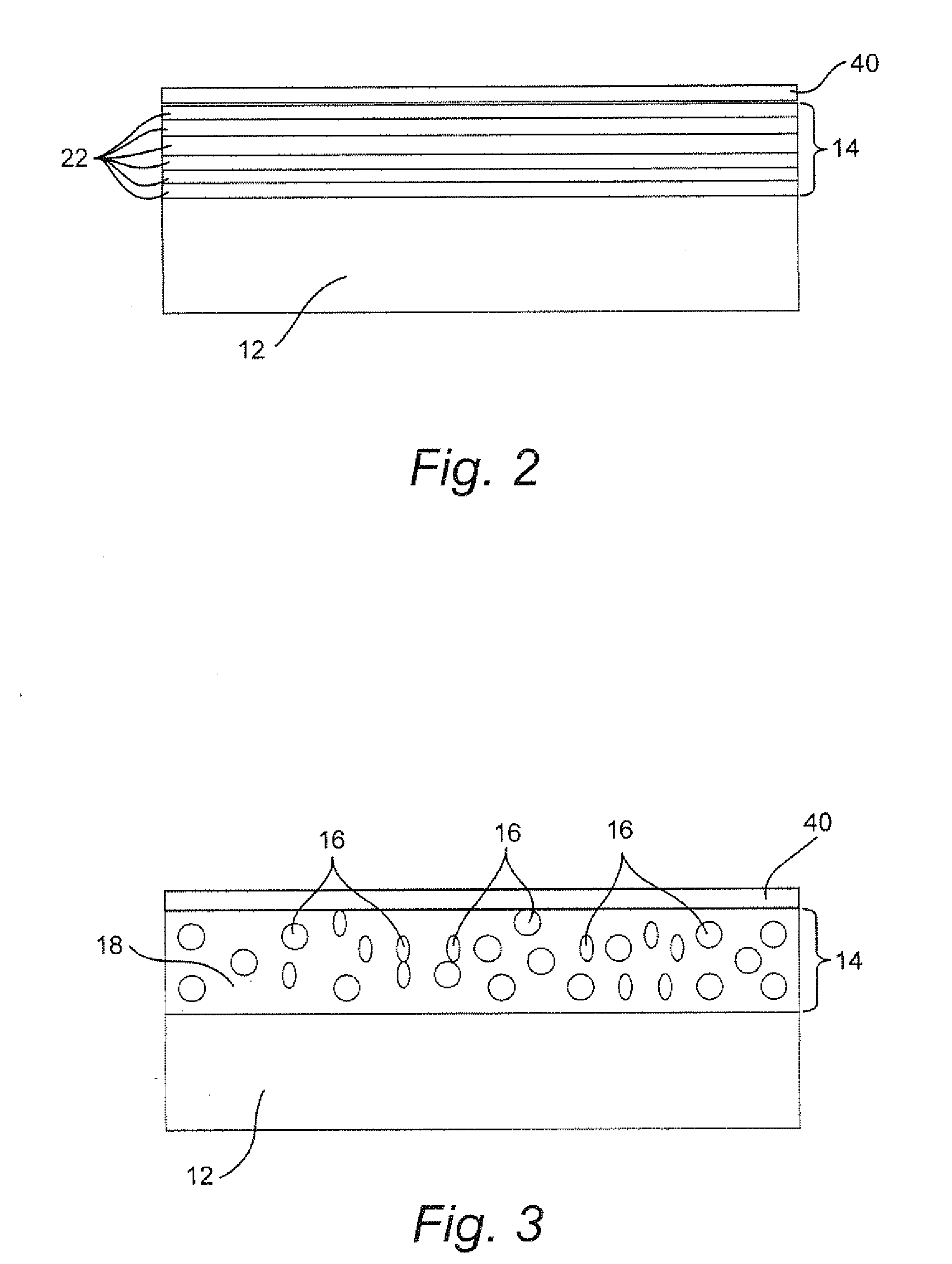Vibration damping novel surface structures and methods of making the same
a surface structure and vibration damping technology, applied in the field of turbines, can solve the problems of energy dissipation, many of the components of the turbine may be subjected to vibrational stress during the operation of the turbine, and the fatigue life of the components
- Summary
- Abstract
- Description
- Claims
- Application Information
AI Technical Summary
Benefits of technology
Problems solved by technology
Method used
Image
Examples
Embodiment Construction
[0020]Several types of damping materials may exist. Natural composites (such as Fe—C—Si and Al—Zn alloys) may use a damping mechanism relating to viscous or plastic flow across phase boundaries between the matrix and the second phase. Ferromagnetic alloys (such as Fe, Co, and Ni, Fe—Cr, Fe—Cr—Al, Co—Ni—Ti, and Co—Ni—Fe) may use a damping mechanism relating to magneto-mechanical static hysteresis due to irreversible movement of ferromagnetic domain-walls. Alloys based on dislocation damping (such as Mg, Mg-0.6% Zr, Mg-Mg2Ni) may use a damping mechanism relating to static hysteresis due to the movement of dislocation loops, breaking away from pinning points. Alloys with movable twin or phase boundaries (such as Mn—Cu, Mn—Cu—Al, Cu—Zn—Al, Cu—Al—Ni, Ti—Ni, and NiTi—Co) may use a damping mechanism relating to the movement of twin boundaries, martensite-martensite boundaries, and boundaries between martensite and the matrix-phase.
[0021]In general, the diversity and ambiguity of damping un...
PUM
| Property | Measurement | Unit |
|---|---|---|
| temperatures | aaaaa | aaaaa |
| thickness | aaaaa | aaaaa |
| thickness | aaaaa | aaaaa |
Abstract
Description
Claims
Application Information
 Login to View More
Login to View More - R&D
- Intellectual Property
- Life Sciences
- Materials
- Tech Scout
- Unparalleled Data Quality
- Higher Quality Content
- 60% Fewer Hallucinations
Browse by: Latest US Patents, China's latest patents, Technical Efficacy Thesaurus, Application Domain, Technology Topic, Popular Technical Reports.
© 2025 PatSnap. All rights reserved.Legal|Privacy policy|Modern Slavery Act Transparency Statement|Sitemap|About US| Contact US: help@patsnap.com



